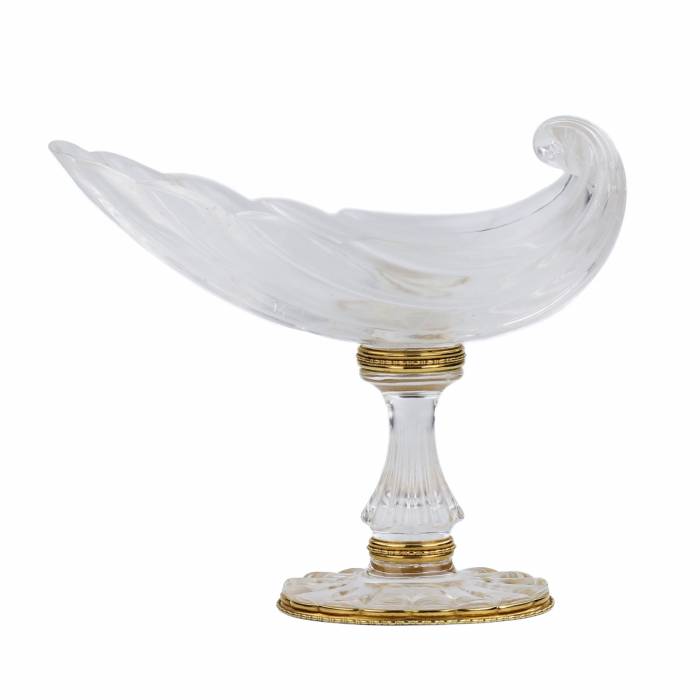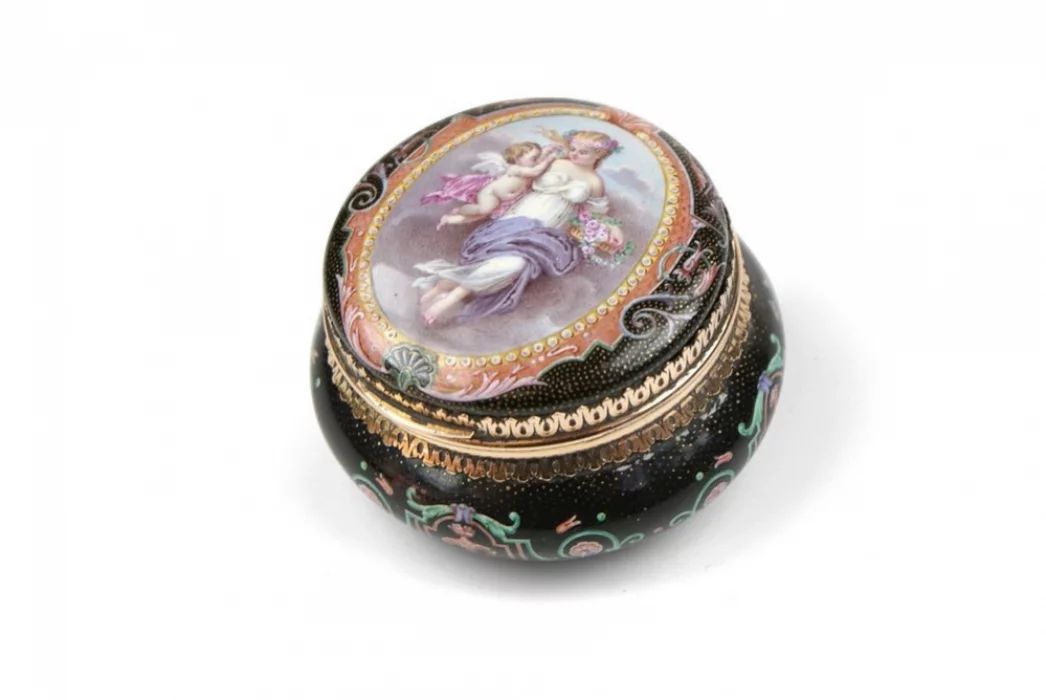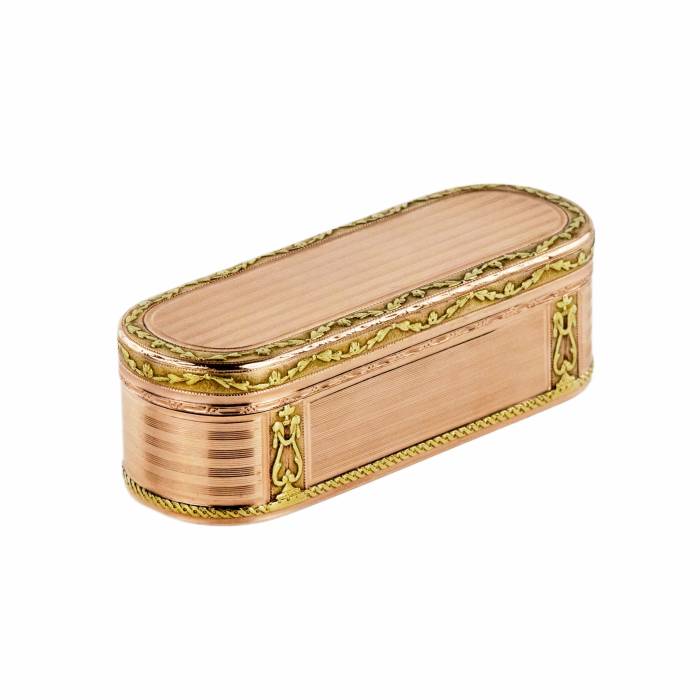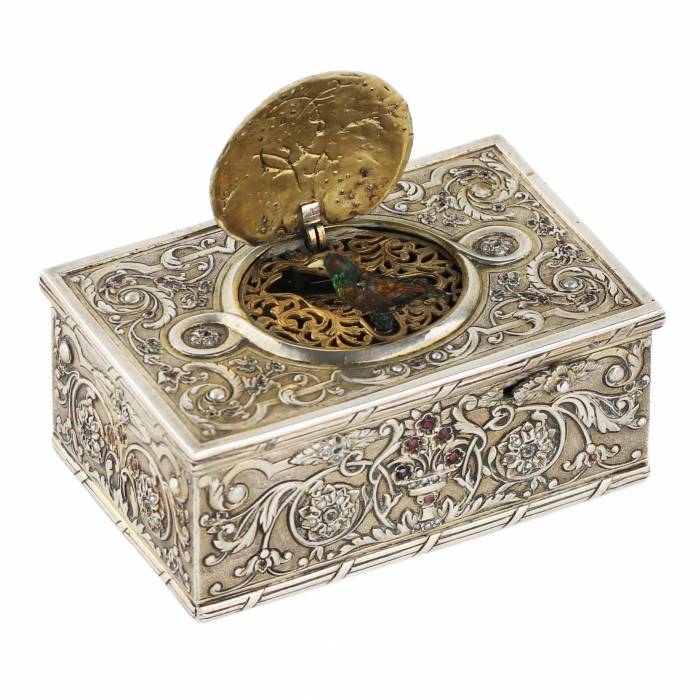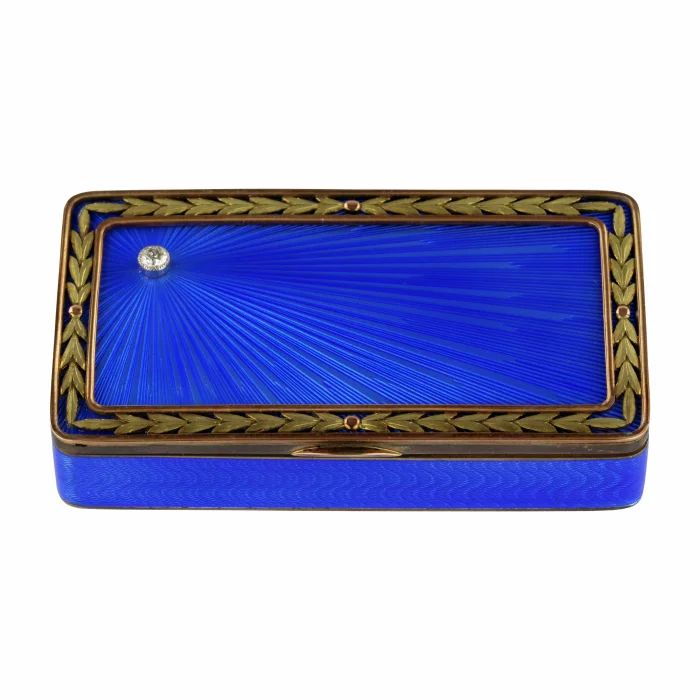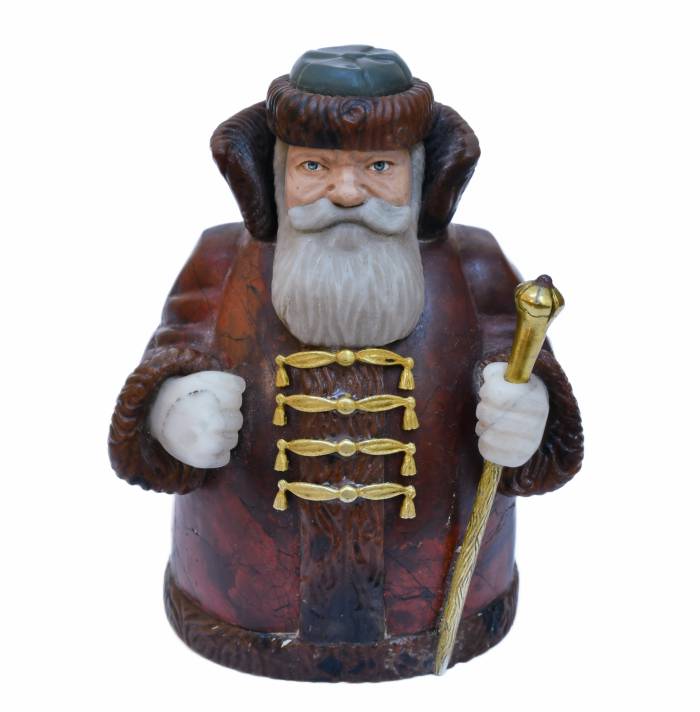
AntiqonART consultant will contact you within one business day after receiving your request.




At Antiqon ART, we build trust and value your choice. Every purchase of art and antiques with us is an investment backed by our expertise, reputation, and a 100% authenticity guarantee.
Discover how the value of similar works has evolved over the past 10 years. Art is not only beauty — it's an investment.
Antiqon ART offers free packaging, insurance, and delivery for most items purchased through the company. Exceptions include large and oversized items that require specialized packing and shipping.
This composition is a carefully designed sculptural group, in which every detail — from the expressive face to the folds of traditional Russian attire — is rendered with utmost attention to form, texture, and proportion. It is executed in a complex multi-material technique using Kalanivka and Orsk jasper, jade, flint, cacholong, with elements of chased silver and glazed enamel. The interplay between matte and polished surfaces enhances the textile and anatomical textures, imparting a vivid sculptural presence.
Of particular note is the psychological expressiveness: the slightly inclined head, the focused gaze, and the monumentality of posture convey the dignity and pride of a 17th-century Russian nobleman. The proportions and rhythm of the figure harmonize with its base, creating a complete sculptural monument in miniature. The group is mounted on a finely polished stone base that accentuates the figure’s vertical silhouette.
The figure is preserved in its original wooden case with silk lining, stamped in gold: FABERGÉ — ST. PETERSBURG, MOSCOW, LONDON, beneath the Russian Imperial arms. The case is entirely authentic and corresponds to Fabergé’s standards for items intended for export and high-level gifting.Hallmarks: absent, as typical for objects of this class and period.
Dimensions: height — 6 cm; base diameter — 4.7 cm; width — 4 cm.
Condition: excellent, with minimal signs of wear.
Provenance: according to archival data, this miniature was created as a chamber variation of a larger composition executed for Emperor Nicholas II in 1910.
In 1915, a dedicated hardstone workshop was established in Petrograd at 44 English Embankment, under the direction of Peter Mikhailovich Kremlev, a master of the Yekaterinburg school of carving. Staffed by around twenty artisans — carvers, sculptors, polishers, enamellers and assemblers — the workshop became the nucleus of what later came to be known in Western scholarship as the Verfel–Kremlov school of hardstone figures, famed for its realistic yet decoratively nuanced portrayals of Russian folk types.
The present figure of a “Boyar” ranks among the most important creations of this tradition. Archival sources indicate that a larger version of the same composition (height 15.2 cm) was first executed around 1910 for Emperor Nicholas II. It later belonged to Agathon Karlovich Fabergé and was sold in England in 1939. In keeping with the firm’s strict policy of non-replication, the present smaller version (height 6 cm) is considered an original chamber-scale variation. Its creation is dated to 1915–1917 and is attributed to the hardstone workshop under Kremlev’s leadership.
The Boyar figure is part of an elite series of miniatures commissioned by Emperor Nicholas II. His collection included representations of a Carpenter, Janitor, Nursemaid, Woman on Her Way to the Bath, Soldier on Duty, and Court Cossack Kudinov, as well as the present Boyar. These sculptures, crafted from jasper, jade, chalcedony, cacholong, flint, silver and enamel, exhibit masterful modelling, delicate detailing and exceptional artistic finish.
The iconography of the composition likely draws from the operatic character in Modest Mussorgsky’s Boris Godunov, a favourite of the Imperial court. The stylised pose, formal costume and psychological presence are emblematic of late Fabergé works influenced by Russian historicism and theatre.
Auction precedents confirm the rarity and value of this type. On 20 April 2005, Sotheby’s New York sold a comparable Boyar figure (St. Petersburg, c.1910, height 5.2 cm) for $1,808,000 (Lot 44), exceeding its $600,000–800,000 estimate — one of the highest recorded prices for Fabergé hardstone sculpture.Technically, the figure is a multi-component construction executed in Kalanivka and Orsk jasper, jade, cacholong, flint, silver and glazed enamel. Each material was selected for its colour harmony and symbolic resonance: jasper for endurance, jade for wisdom, cacholong for spiritual purity. The face and hands are carved with painterly precision, attesting to the work of highly skilled Fabergé artisans.
The original leather case with silk lining and the gold-embossed stamp “FABERGÉ — ST. PETERSBURG, MOSCOW, LONDON,” along with the Russian Imperial arms, confirms the prestige of this commission. Archival and museum records show that such cases accompanied Fabergé works destined for the firm’s London salon or high-level diplomatic presentation.
This Boyar figure thus represents not only a rare and refined example of Fabergé’s hardstone school, but also a cultural artefact of late Imperial Russia. Confirmed by archival, stylistic, and technical analysis, it belongs to the highest category of museum-worthy and investment-grade Fabergé works, highly prized by collectors and institutions worldwide.
The condition report is provided for informational purposes only.
It is not comprehensive and may not reflect all defects, restorations, alterations, or adaptations, as Antiqon does not perform professional conservation-level assessments. The information is based on a qualified, yet subjective, evaluation by our specialists.Before purchasing, we recommend consultation with an independent expert.Please also consult our Terms and conditions and Glossary A-Z, which contain important information on lot characteristics and sale conditions.

Thank you for your request!
Our consultant will contact you soon.

AntiqonART consultant will contact you within one business day after receiving your request.
Thank you for your request!
Our consultant will contact you soon.

AntiqonART consultant will contact you within one business day after receiving your request.




